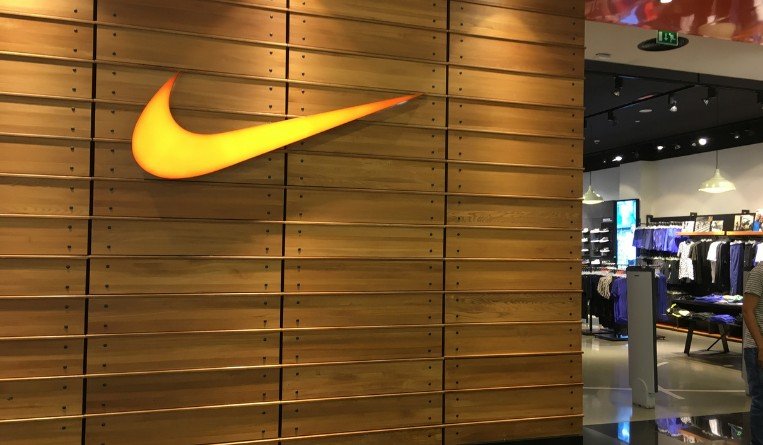In September, Nike cut is sales forecast and warned of delays during the holiday shopping season. Since then, more and more U.S. companies have advised consumers to shop early for Christmas to beat the looming spectre of empty shelves and extended wait times beyond the holidays.
Nike’s warning came after an outbreak of Covid-19 had forced factories in Vietnam to close and disrupted shipping from the country. According to one report, Nike produces about half of its footwear in Vietnam.
Ongoing problems with supply chains are hurting U.S. businesses, and not only retailers that rely on imports from Asia. A survey of some 130 manufacturing firms by technology and professional services provider Sikich found that 93% of the respondents had faced challenges from the impact of Covid-19, and 76% stated that the pandemic had exposed weaknesses or gaps in their supply chains.
The repercussions of these disruptions are profound and far-reaching. In the worst case, importers are losing sales because they cannot get hold of products on order or they have to cut back output owing to shortages of critical parts. In addition, they face hugely inflated shipping costs that balloon further as charges for demurrage or excess dwell times of containers pile up. Many firms were forced by the congestion in ocean transportation to shift to airfreight.
In addition, the need to build up safety stock has added to the shortage of warehousing capacity and the ensuing surge in storage costs.
As a result, a rising number of U.S. firms are reconsidering their sourcing strategy as the proliferation of obstacles in the supply chain threatens to undermine their established business model. A survey of U.S. manufacturers by supply chain platform provider Thomas found that 83% were likely to re-shore their sourcing. This was up from 54% expressing this sentiment in March 2020.
Almost half of the manufacturers that participated in the survey by Sikich indicated that they wanted to diversify their supply chains, partly to reduce the risk of single-source procurement and partly to produce closer to their markets.
North American firms are not alone with this change in supply chain strategy. Italian fashion firm Benetton is on the retreat from Asia. This year it shifted more than 10% of its production in China, India, Bangladesh and Vietnam to Europe, and by the end of 2022, management aims to halve its production in Asia.
Instead, Benetton will produce more in Serbia, Croatia, Turkey, Egypt and Tunisia. The cost advantage of sourcing from Asia is undermined by the elevated supply chain costs and significantly extended transit times. Average lead times have stretched from previously 4-5 months to 7-8 months, according to the fashion firm.
German fashion brand Hugo Boss is reportedly also planning to locate production closer to its main markets.
One forwarder noted that the trend towards nearshoring goes back beyond the impact of Covid-19. The trade war started by the Trump administration already prompted many U.S. firms to reconsider their sourcing strategy and diversify procurement, he noted. In addition, the cost gap was already narrowing due to rising wages in China and Vietnam, he added.
While European brands look to Eastern Europe and the Mediterranean shores to build up production, their U.S. counterparts have their eyes on Latin America. Logistics and airport executives in the region have reported mounting interest from U.S. firms.
“We see increased interest in nearshoring to Latin America, especially in the high-tech sector,” reported Robert Villamizar, director of route development, U.S.-Latin America at DHL Forwarding in Miami.
Overall, the automotive industry, the oil and gas sector and light electronics are leading the migration of manufacturing to Latin American countries, but the fashion sector is also on the move.
These developments are beginning to show in air freight volumes flown out of Latin America. Perishables still dominate by a wide margin, but it has shrunk in several countries as more hard freight is loaded onto planes departing from the region, observed Carsten Hernig, the São Paulo-based vice president, Latin America & Caribbean, at Lufthansa Cargo.
Mexico is garnering the lion’s share of the interest, but firms are also looking to Costa Rica, Puerto Rico and Panama, Villamizar said.
Countries like Panama, Colombia and Chile have trade agreements with the U.S., which heightens their appeal, another forwarder executive noted.
Some brands are looking to the U.S. for production. In March, Walmart pledged US$900 million to support developments that could raise its domestic sourcing. It is selecting 900 U.S. companies that it will support. This resonates with efforts of the U.S. administration to boost domestic production of strategic commodities like semiconductors and pharmaceuticals.
All of this suggests a diminished role for Asian production in supply chains of North American and European businesses, but it not does not signal an exodus from the region. Kuehne+Nagel CEO Detlef Trefzger in Zurich pointed out that most players want to diversify their supply chains, building up a second or third leg to avoid dependence on a single region of origin. Meanwhile, the expanding intra-Asian trade should absorb a lot of production that would otherwise head overseas.
Ian Putzger



